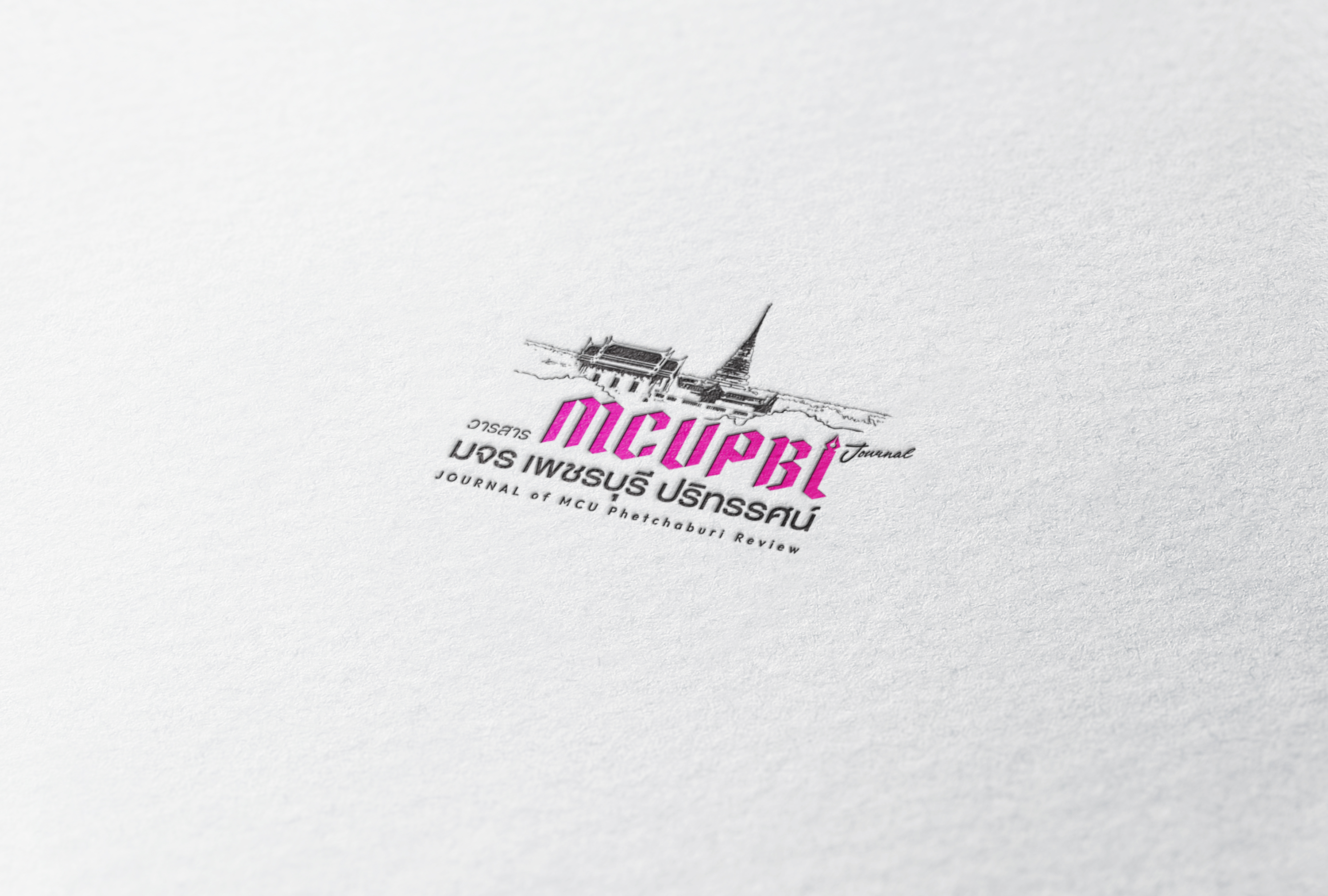การพัฒนาผลสัมฤทธิ์ทางการเรียนและความสามารถในการแปลความหมายข้อมูลและประจักษ์พยานเชิงวิทยาศาสตร์ของนักเรียนชั้นมัธยมศึกษาปีที่ 2 ด้วยการจัดการเรียนรู้วิทยาศาสตร์โดยใช้บริบทเป็นฐาน
Main Article Content
บทคัดย่อ
การวิจัยครั้งนี้มีวัตถุประสงค์เพื่อ 1) เปรียบเทียบผลสัมฤทธิ์ทางการเรียนวิทยาศาสตร์ของนักเรียนชั้นมัธยมศึกษาปีที่ 2 ด้วยการจัดการเรียนรู้วิทยาศาสตร์โดยใช้บริบทเป็นฐานระหว่างก่อนเรียนกับหลังเรียนและหลังเรียนกับเกณฑ์ร้อยละ 80 ของคะแนนเต็ม 2) เปรียบเทียบความสามารถในการแปลความหมายข้อมูลและประจักษ์พยานเชิงวิทยาศาสตร์ของนักเรียนชั้นมัธยมศึกษาปีที่ 2 ด้วยการจัดการเรียนรู้วิทยาศาสตร์โดยใช้บริบทเป็นฐานระหว่างก่อนเรียนกับหลังเรียนและหลังเรียนกับเกณฑ์ร้อยละ 80 ของคะแนนเต็ม กลุ่มตัวอย่างในการวิจัย คือ นักเรียนชั้นมัธยมศึกษาปีที่ 2 โรงเรียนสาธิตมหาวิทยาลัยราชภัฏนครปฐม ภาคเรียนที่ 2 ปีการศึกษา 2565 จำนวน 40 คน ซึ่งได้มาโดยการสุ่มแบบกลุ่ม เครื่องมือที่ใช้ ในการวิจัย ได้แก่ 1) แผนการจัดการเรียนรู้วิทยาศาสตร์โดยใช้บริบทเป็นฐาน จำนวน 5 แผน 2) แบบทดสอบวัดผลสัมฤทธิ์ทางการเรียนวิทยาศาสตร์ และ 3) แบบทดสอบวัดความสามารถในการแปลความหมายข้อมูลและประจักษ์พยานเชิงวิทยาศาสตร์ สถิติที่ใช้ในการวิเคราะห์ข้อมูล ได้แก่ ค่าเฉลี่ย ส่วนเบี่ยงเบนมาตรฐาน และการทดสอบที ผลการวิจัยพบว่า 1) ผลสัมฤทธิ์ทางการเรียนของนักเรียนชั้นมัธยมศึกษาปีที่ 2 ด้วยการจัดการเรียนรู้วิทยาศาสตร์โดยใช้บริบทเป็นฐานมีคะแนนหลังเรียนสูงกว่าก่อนเรียนและหลังเรียนสูงกว่าเกณฑ์ร้อยละ 80 อย่างมีนัยสำคัญทางสถิติที่ระดับ .05 2) ความสามารถในการแปลความหมายข้อมูลและประจักษ์พยานเชิงวิทยาศาสตร์ของนักเรียนชั้นมัธยมศึกษาปีที่ 2 ด้วยการจัดการเรียนรู้วิทยาศาสตร์ โดยใช้บริบทเป็นฐานมีคะแนนหลังเรียนสูงกว่าก่อนเรียนและหลังเรียนสูงกว่าเกณฑ์ร้อยละ 80 อย่างมีนัยสำคัญทางสถิติที่ระดับ .05
Article Details

อนุญาตภายใต้เงื่อนไข Creative Commons Attribution-NonCommercial-NoDerivatives 4.0 International License.
เอกสารอ้างอิง
กระทรวงศึกษาธิการ. (2560). มาตรฐานการเรียนรู้และตัวชี้วัด กลุ่มสาระการเรียนรู้คณิตศาสตร์ (ฉบับปรับปรุง พ.ศ. 2560) ตามหลักสูตรแกนกลางการศึกษาขั้นพื้นฐาน พุทธศักราช 2551. กรุงเทพฯ: โรงพิมพ์ชุมนุมสหกรณ์การเกษตรแห่งประเทศไทย.
กฤษฎาวุฒิ ไชยวุฒิ. (2563). การศึกษาผลสัมฤทธิ์ทางการเรียนและเจตคติต่อการเรียน วิทยาศาสตร์ของนักเรียนชั้นมัธยมศึกษาปีที่ 2. วารสารบัณฑิตศึกษามหาจุฬาขอนแก่นมหาวิทยาลัยมหาจุฬาลงกรณราชวิทยาลัย, 8(3), 151-161.
ณัฐมน สุชัยรัตน์. (2558). การพัฒนารูปแบบการเรียนการสอนตามแแนวคิดการสืบสอบโดยใช้แบบจำลองเป็นฐานและแนวคิดการเรียนรู้โดยใช้บริบทเป็นฐานเพื่อส่งเสริมความสามารถในการให้เหตุผลเชิงวิทยาศาสตร์และการถ่ายโยงการเรียนรู้ของนักเรียนระดับชั้นมัธยมศึกษาตอนต้น. วิทยานิพนธ์ปริญญาดุษฎีบัณฑิต สาขาวิชาหลักสูตรและการสอน: จุฬาลงกรณ์ .
ณัฐรินีย์ อภิวงค์งาม. (2554). การศึกษาผลสัมฤทธิ์ทางการเรียนวิทยาศาสตร์และจิตวิทยาศาสตร์ของนักเรียนชั้นมัธยมศึกษาปีที่ 3 ที่ได้รับการจัดการเรียนรู้โดยใช้บริบทเป็นฐานและการจัดการเรียนรู้แบบสืบเสาะ. วิทยานิพนธ์ปริญญาการศึกษามหาบัณฑิต: มหาวิทยาลัยศรีนครินทรวิโรฒ.
ทัศตริน เครือทอง. (2553). การเรียนรู้วิทยาศาสตร์อย่างมีบริบท. สสวท, 38(166), 56-59.
ปรียาภรณ์ ดำพะธิก. (2558). การสร้างเครื่องมือประเมินวินิจฉัยสมรรถนะทางด้านวิทยาศาสตร์ของนักเรียนชั้นมัธยมศึกษาปีที่ 3 ตามแนวคิดการประเมินวินิจฉัยทางปัญญา. วิทยานิพนธ์ปริญญาวิทยาศาสตร์มหาบัณฑิต สาขาวิชาวิจัย วัดผล และสถิติการศึกษา มหาวิทยาลัยบูรพา.
ปวันรัตน์ ศรีพรหม. (2562). การพัฒนากิจกรรมการเรียนรู้โดยใช้บริบทเป็นฐานร่วมกับอินโฟกราฟิกเพื่อส่งเสริมการเรียนรู้เรื่องวิทยาศาสตร์และเจตคติต่อวิทยาศาสตร์เรื่องพันธะเคมี สำหรับนักเรียนชั้นมัธยมศึกษาปีที่ 4. วิทยานิพนธ์ปริญญาการศึกษามหาบัณฑิตสาขาหลักสูตรและการสอน มหาวิทยาลัยนเรศวร.
พรทิพย์ ศิริภัทราชัย. (2556). STEM Education กับการพัฒนาทักษะในศตวรรษที่ 21. วารสารนักบริหาร, 33(2), 49-56.
พลอยนัดดา ผาบไชย. (2561). การพัฒนาการรู้วิทยาศาสตร์โดยใช้บริบทเป็นฐาน เรื่อง กรด-เบส สำหรับนักเรียนชั้นมัธยมศึกษาปีที่ 5. วิทยานิพนธ์ปริญญาการศึกษามหาบัณฑิต สาขาวิชาเคมี บัณฑิตวิทยาลัย มหาวิทยาลัยนเรศวร.
พัฒนพงษ์ พงษ์จันโอ. (2560). การศึกษาการจัดกิจกรรมการเรียนรู้โดยใช้บริบทเป็นฐาน เรื่องปฏิกิริยาเคมี สำหรับนักเรียนชั้นมัธยมศึกษาปีที่ 4. วิทยานิพนธ์ปริญญาครุศาสตรมหาบัณฑิต สาขาวิชาวิทยาศาสตร์ มหาวิทยาลัยมหาสารคาม.
โรสมาวัน อะลีดิมัน. (2556). ความเข้าใจธรรมชาติของวิทยาศาสตร์ของนักเรียนแผนการเรียน. วิทยานิพนธ์ปริญญาศึกษาศาสตรมหาบัณฑิต. สาขาวิทยาศาสตร์ศึกษา บัณฑิตวิทยาลัย มหาวิทยาลัยสงขลานครินทร์.
สถาบันส่งเสริมการสอนวิทยาศาสตร์และเทคโนโลยี. (2552). คู่มือวัดประเมินผลวิทยาศาสตร์. กรุงเทพฯ: สถาบันส่งเสริมการสอนวิทยาศาสตร์และเทคโนโลยี.
สถาบันส่งเสริมการสอนวิทยาศาสตร์และเทคโนโลยี. (2564). เอกสารประกอบการอบรมการจัดการเรียนรู้ฐานสมรรถนะทางวิทยาศาสตร์. กรุงเทพฯ: สถาบันส่งเสริมการสอนวิทยาศาสตร์และเทคโนโลยี.
สุพัฒน์ สุกมลสันต์. (2547). การวิเคราะห์ข้อสอบแบบอัตนัยรายข้อ. ภาษาปริทัศน์,21(44-54).
อธิษฐาน บุญเป็ง. (2558). การพัฒนาความสามารถในการนำความรู้ไปใช้ของนักเรียนชั้นมัธยมศึกษาปีที่ 4 เรื่อง ปฏิกิริยาเคมีโดยการจัดการเรียนรู้โดยใช้บริบทเป็นฐาน. วารสารศึกษาศาสตร์ปริทัศน์, 30(2),162-172.
Anderson, L.W, & Krathwohl, D.R. (2001). A Taxonomy for Learning, Teaching, and. New York: Longman.
Elmas, R. & Geben, o. (2016). The effect of Context Based Chemistry Instruction on 9thGrade Students’ Understanding of cleaning Agent Topic and Their Attitude Toward Environment. Egitim Ve Bilim, 41,(185).
Goncalo, C & Caroline, D. (2016). What university students think about context-based learning? A case study in an industrial management
course for future engineers. Education editora, 44-45.
Jong, D. (2008). Context-based chemical education: How to improve it? Chemical ducation International, 8(1), 1-7.
Kuhn, J. &. (2014). Context – Base science education by newspaper: A study on motivation and learning effect. Science Direct, 2, 5-21.
llhan, N., Yildirim, A., Yilmaz, S., & Education, S. (2016). The effect of context-based chemical equilibrium on grade 11 students' learning, motivation and constructivist learning environment. International Journal of Environmental, 11(9), 3117-3137.
Mansor, N. S., & Masran, M. N. (2021). 21st Century Strategy Teaching and LearningPDPC in Ibe History Module on Knowledge of Writing Skills for form Six Students. International Journal of Academic Research in Progressive Education and Development, 10(2), 467–473.
Parchmann et al. (2006). Chemie in context : A symbiotic implementation of a context based teaching and learning approach. International Journal of Science Education, 28(9), 1041- 1062.


